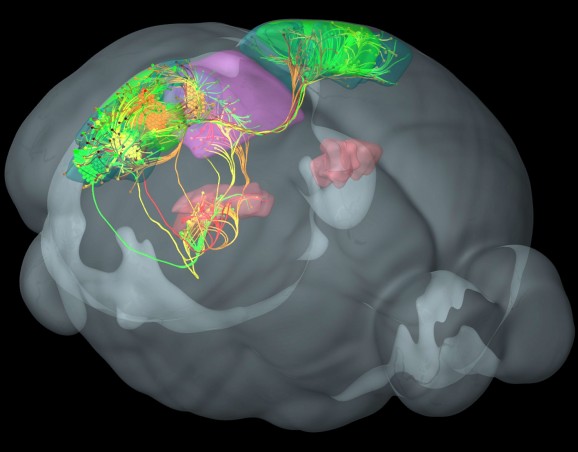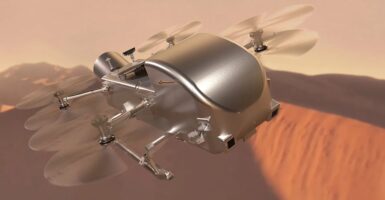Scientists Map A Mouse’s Brain For The First Time
This article is more than 2 years old

In order to understand our own brains, and eventually create artificial ones, scientists are trying to first get a grip on the slightly less complex brains of smaller species, such as mice. Scientists at Seattle’s Allen Institute for Brain Science have just finished creating the first detailed maps of the mouse brain, including neural networks that join neuronal clusters.
While not as complex as a human brain, a mouse brain has more than 86 million neurons, each of them connecting in at least 1,000 different ways to other neurons, clusters, and groupings. Scientists liken such an arrangement to a complicated road system with different highways and paths from each place to the next. Scientists created a connectome, or a diagram of the wiring of a mouse brain, which is the first map of a mammalian neural network.
The researchers inserted special tracer viruses into the brains of 1,700 different mice (sorry, PETA) that lit up the neuronal pathways. They then gathered images of the brains at extremely small resolutions, which they used to construct a 3-D map of the brain’s pathways. In total, the amount of data collected by researchers totals 1.8 petabytes — a unit I’d never even heard of before. But if you were to watch this in high-def video, it would take you over 20 years to finish the footage.

The data reveals a bunch of interesting insights, including the variety of connections in the mouse brain — some are very strong while others are weak, and they include specific patterns. All of this suggests that the brain has patterns for processing information, and scientists speculate that the weak and small connections might somehow balance one another, each contributing to the overall computing ability of the brain.
The next step is to focus in even more on each of the smaller pathways, and to compare the maps of healthy mice to the maps of diseased ones. Now that they’ve mapped the connections, they want to get more information about how exactly they function.
The same scientists also completed the most detailed fetal human brain map ever made. They used lasers to dissect four developing brains, and used color staining to show gene activity. The result is a map of how genes are expressed, or turned on and off, in the developing human brain. Such a study could be used to help treat autism and other diseases associated with early brain development.












